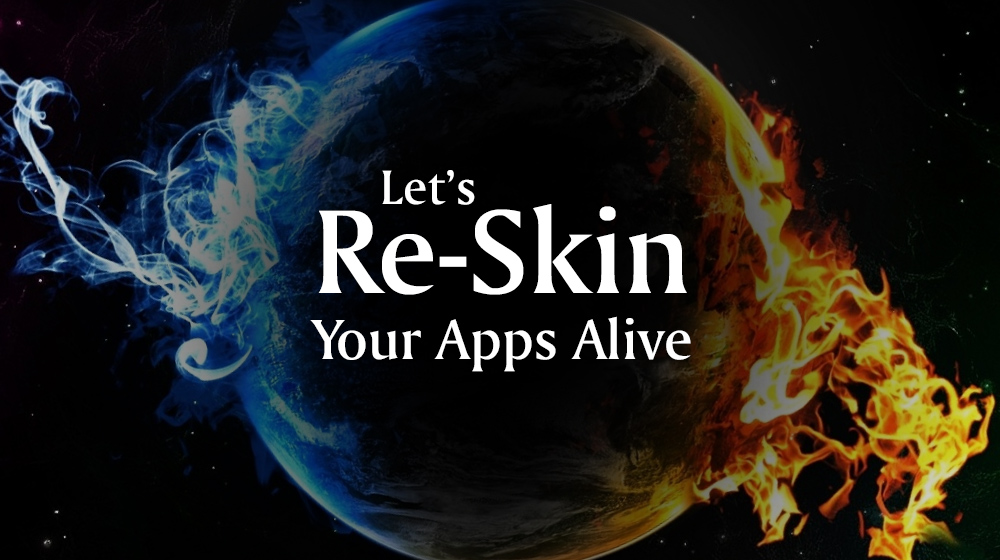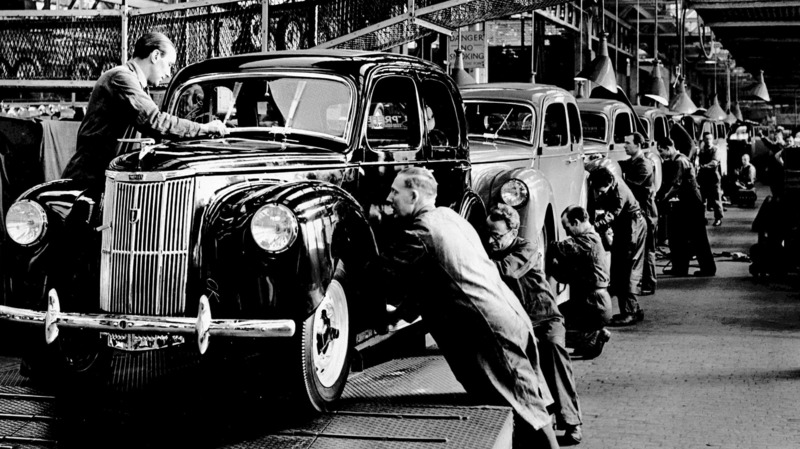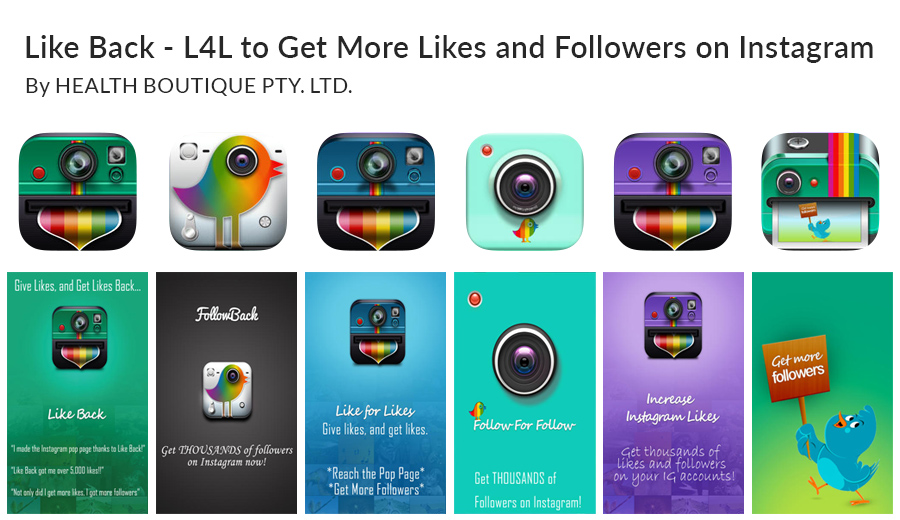“Literally, we will re-skin that app alive for you.”
“Eh! What?”
“Well, you heard that right. We will just re-skin the required app for you. As in, we will change the look and feel of the app completely, but then let the code be.”
Given that ready-made codes are easily available for a fixed price, you can simply go for them, or if you want we can even make use of the codes of your former apps, as it is, to build newer apps from them. Like it or not, the age of skin-deep apps is upon us.
Now, how does re-skinning help? Re-skinning not only reduces our work by half but brings down app development cost by half as well. Not to mention it speeds up the app development process as a whole. And, to top it all, it boosts your app revenue.
So, don’t ever re-think re-skinning your apps. Just go on and do it! This will help you use every ounce of your energy in fine-tuning or changing the graphic elements of your apps. And, bingo! Your app is ready to create ripples in the global app space in no time.
Does that all sound good to you?
“ ”Course, you can term it as cutting corners. “ ” Course, it means less work on the app development front. But then, candidly speaking, we ain’t great fans of re-inventing the wheel. Who else is, by the way? Why add to your headaches and heartaches, when re-skinning is such a sweet, sweet possibility?
In fact, it isn’t you or me going the re-skinning way. The concept is gaining ground widely given the enormous time, money, and efforts that go into building complex apps from scratch.
But then, you know what…the idea of re-skinning cannot be attributed to the app industry at all. In fact, it was the late American Industrialist Henry Ford who pioneered this technique… popularly referred to as the “assembly line” technique in the automobile space.
Questions Answered About App Re-skinning
1. Re-skinning? How did the idea come about?
American Industrialist Henry Ford pioneered the “assembly line” technique that’s been adapted into the app-dom these days as ‘Re-skinning.‘
In 1907, Henry Ford aspired to make motor cars for the masses. During those times, the cars were apparently custom-made, making it a luxurious item that only a few well-heeled people could afford.
So, the Ford engineers, as a tribute to Henry’s dreams, racked their brains to build simple, sturdy cars and labeled them as ‘Model T’. About 15,000,000 cars were rolled out, in next to no time; and that too in the same color. But even then the car was turning out to be too expensive for the multitudes.
Once again, Ford and his engineering team were forced to go back to their drawing boards. This time, they worked upon a completely new business model based on four principles, which were commonplace in other industries but were completely new to them. They were: namely, interchangeable parts, continuous flow, division of labor, and reducing wasted effort.
‘Interchangeable parts’ was about making individual pieces of the car the same every time. As in, designing the steering wheel, in such a way, that it would fit all styles of chassis. So, by introducing some kind of uniformity, he could freely think of replacing a skilled craftsperson with a rookie.
He also introduced some kind of grain mill conveyor belt, and things like that, to cut down the movement of workers within the factory premises. Further, he divided the Model T into 84 distinct steps. Each worker was supposed to undertake one particular job and achieve mastery in that particular domain. Ford even introduced scientific management to determine the speed of work and the exact motions the workers could apply to accomplish their tasks at hand easily and fast.
Finally, the year 1913 saw the culmination of his efforts. He launched his first moving assembly line for large scale manufacturing and produced cars at a break-neck speed. His dream had finally come true. He was able to flood the marketplace with lowly priced cars, that unsurprisingly raked in unimaginable profits.
2. How do you define app re-skinning?
Re-skinning an app is all about changing the graphics, without changing the codes. And, yes you can apply this technique to all the apps, regardless of the category they fall into, be it the games app or the productivity apps. For instance, in the game application, when we talk about changing the look and feel, it just means you need to change the game characters, background, artwork, and the sound of the game, but the gameplay remains the same.
3. Is re-skinning good for my business?
Yes, one thing you can be sure about it is that it’s loads better than building apps from scratch. Partly, because it helps you save time, and partly because it helps bring down the app development cost, considerably. You do not have to hire an app developer or designer and that reduces your heartaches by half. All that you need to do is change some graphics. That’s about it. The code remains sacrosanct. You don’t have to touch them at all. And, on top of it, you get to create multiple apps from a single code. What more can you ask for?
4. Won’t it be boring to reuse the same apps over and over again?
I have a different take on this. Given that we are changing the graphics and all, users, generally, don’t mind downloading such apps. If the growing number of app flips are any guide, the app store today is inundated with a good number of re-skinned apps — apps with the same gameplay and strategy, save for a few tweaks, here and there. So, if you are having reservations about re-skinning, do away with them now, given that re-skinning is the best bet to skyrocket your app revenue.
A real-life example of Re-Skinning of apps by our in-house iOS developers 
Here’s a live example of ‘Like Back,’ a Photo and Video app designed for Health Boutique Pty Ltd. by OpenXcell’s iOS developers. The app was such a roaring success that this company went on to built 5 more apps with the same source code.
5. What if the source code doesn’t fit with your app requirements?
Re-Skinned apps, more often than not, are used for in-app advertisements and are available for free. So it doesn’t matter whether the code matches your app requirements or not. What matters here is advertisements within the app given that it helps developers rake in the desired moolah.
For instance, the more app downloads happen, the more the ads get displayed. Now, if you get to reskin these apps, imagine the scope of downloads and ad displays your apps stand to gain.
For instance, an app probably earns you some $10 per day for in-app advertisements. Now re-skin the app in 10 different ways and release it again. A developer would now be able to make $100 dollars in a day. And, monthly it would come to $3000 dollars. That’s the magic of re-skinning.
6. Don’t you have to buy a source code for re-skinning?
Yes, of course. However, the money forked out for buying source code is comparatively lesser than the money you spend on building newer apps from the scratch. So spending on a source code is actually a worthwhile investment for app developers/game developers and app publishers per se.
And, if you don’t wish to spend on the source code, you can even use the source code of your former apps and make different versions of the same. The only thing that you need to change here is graphics and sounds.
7. What’s the most popular app category for re-skinning?
Of course, games. Today, you will find a number of apps with the same gameplay. Graphics and sounds differ, though. How does this help? Multiple games mean multiple channels of advertising for developers, which results in multiple revenues generating opportunities. Sounds good…no? In fact, some developers churn out 10 games using the same code that helps them rake big money.
8. Is cloning different from re-skinning?
Yep! Cloning means out-and-out copying, which is unethical as you might already know. Apple Play Store is dead against such apps. Re-skinning is quite different. In re-skinning, you are using your own code or buying a licensed code in your name. Plus, you will be changing the graphics, sound, and music completely. This cannot be termed as a clone. You coming up with a new app, complete with a new look and feel.
Final Thoughts:
Re-skinning is in. But if you wish to learn the hard way and want to build apps from scratch, go on and do so. Anyway, we’d be there to guide you all the way, whether you like re-skinning or not.
OpenXcell is a market leader in app development and app marketing. So, if in case you are pursuing any serious app development and marketing plans for your organization, OpenXcell will be happy to help. We have the experience and wherewithal to make your app a super success.











